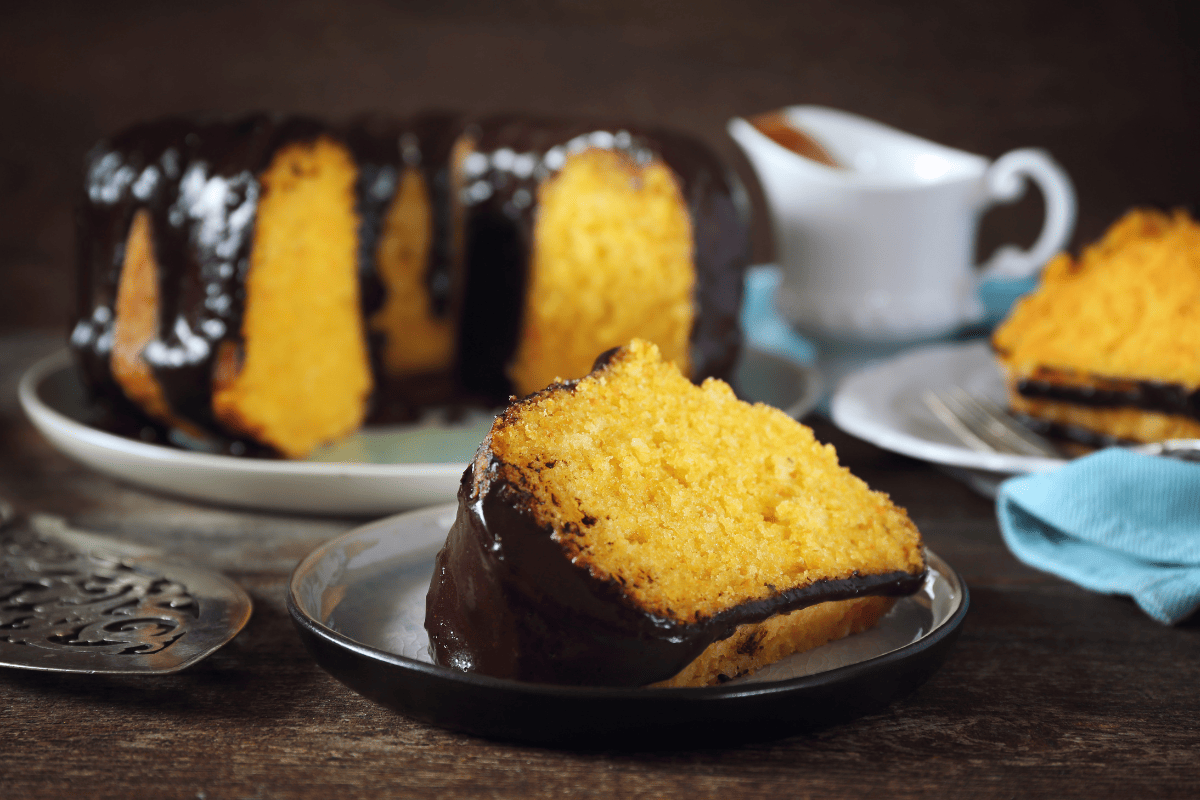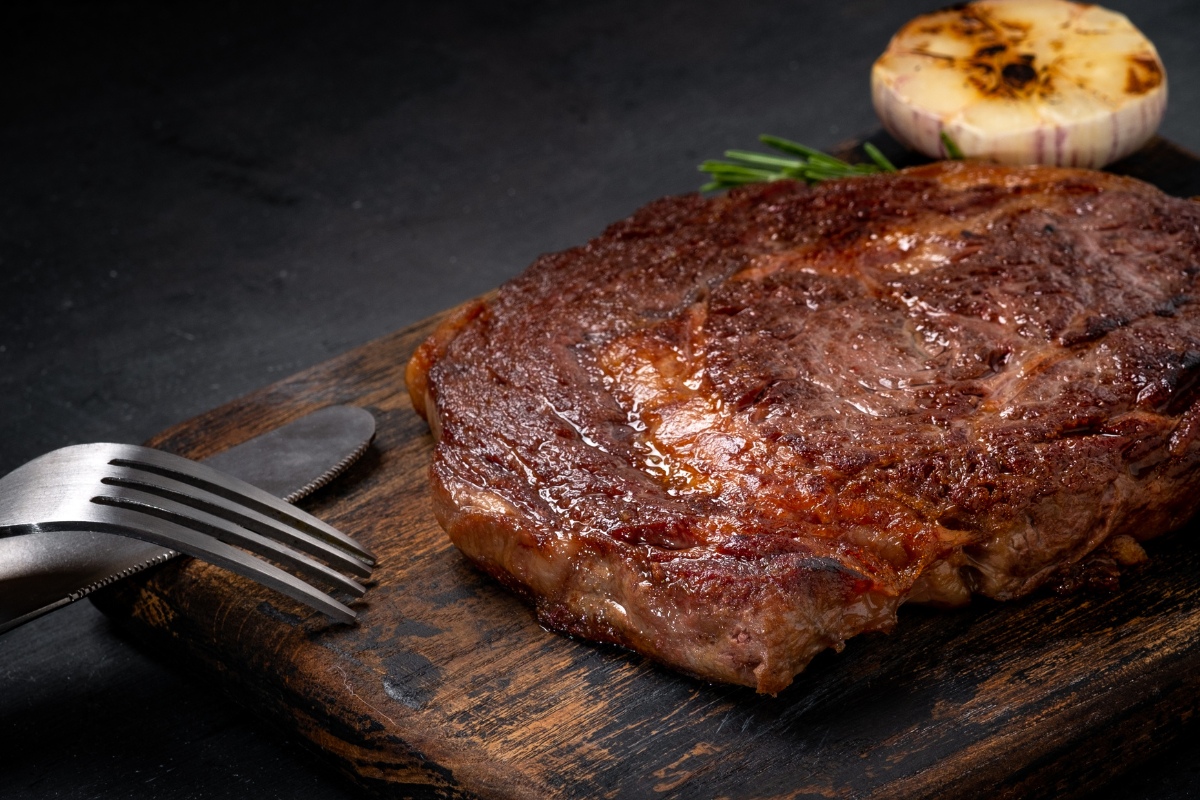
Orange season is fast approaching, and we can’t wait. There is nothing better than the refreshing bite of a ripe navel orange, or a glass of freshly squeezed juice. Oranges also lend themselves nicely to a variety of recipes, both sweet and savory. Today, they are the star of a truly special dessert: chocolate orange cake.
Brazilian Chocolate Orange Cake
Strictly speaking, this is not a traditional recipe. The original recipe is from Portugal, where it is known as bolo de laranja. The Portuguese climate is especially conducive to growing oranges and other citrus, so many national dishes incorporate these fruits. Recipes vary, but orange cake is oftentimes a sheet or bundt cake eaten on Sundays during Lent. A light dusting of powdered sugar is the finishing touch.
Brazilians (famous for their sweet tooth) prefer an orange-infused syrup to soak into the finished cake, which is also baked in a bundt or tube pan. We are taking it one step further and making a chocolate ganache to drizzle over the orange cake.
You may find recipes for bolo de laranja that call for beaten egg whites. This gives the cake an extra lift and a crisper texture. You can certainly do this, but we are feeling lazy and are opting to get our rise through oil, baking powder, and baking soda.
Oil vs Butter for Bolo de Laranja
You can use butter or oil for your chocolate orange cake, but we recommend oil. Oil tends to produce a more moist, even crumb than butter. This is not only important for mouth feel, but also for presentation when you slice into the cake. You won’t have any pieces crumbling away when you serve this cake.
If you do wish to use butter, you can use the same amount of melted butter as you would oil. When using solid butter, you will need to use 25% more in volume. Our recipe today calls for ½ cup of oil, so you would use ⅔ cup of butter or other solid fat.
Ganache for Chocolate Orange Cake
Ganache is simply chocolate slowly melted with cream. The ratio of cream to chocolate for your orange cake will depend on the type you use. In general, dark chocolate (semi-sweet) calls for a 1:1 ratio of chocolate to cream; milk chocolate requires slightly less cream, usually 1 part of cream to two parts of chocolate.
We recommend the semi-sweet ganache for the bolo de laranja. It is already quite sweet, so the slightly bitter taste of the chocolate helps to off-set that. Plus, the appearance of the glossy dark chocolate makes it a real show-stopper.
Feel free to add in a little boozy flavor to the ganache as well. We’re adding a splash of Grand Marnier to suit the orange theme, but a little spiced rum would do nicely, too.
Fresh Orange Juice vs Bottled for Bolo de Laranja
Of course, we are going to recommend fresh squeezed orange juice for this recipe; and with navels coming into season soon, there is no reason to go store bought, in our opinion. Not only is the flavor unparalleled, you will benefit from the antioxidants and enzymes that are destroyed during the bottling process.
That being said, if you don’t want to squeeze it yourself or you don’t have a good supply of fresh oranges near you, bottled will be fine. Just choose a version with pulp and no added sugar.
Chocolate Orange Cake Recipe (Receita de Bolo de Laranja com Chocolate)
Ingredients:
For the Cake Batter:
2.5 cups AP flour
½ tsp salt
1 tsp baking powder
½ tsp baking soda
½ cup extra virgin olive oil
3 large eggs
1 cup orange juice
2 cups white sugar
For the Ganache:
9 oz bittersweet chocolate chips or roughly chopped bars
1 cup heavy cream
1 tbsp Grand Marnier
Directions:
- Preheat the oven to 350 degrees Fahrenheit.
- In a medium bowl, whisk together the baking powder, baking soda, salt, and flour.
- In the bowl of a stand mixer, add in your eggs, sugar, and olive oil. Mix on low until combined. Add in the orange juice, and mix again until blended.
- Add in your sifted dry ingredients and mix on low until just combined. Try not to over-mix.
- Grease a bundt pan with non-stick spray or butter and a coating of flour. Pour the cake batter into the pan and place in the center of the oven.
- Bake for 40 minutes, or until a knife inserted into the batter comes out clean.
- Turn the cake out onto a serving tray and let it cool for at least an hour.
- When the cake is cool, make your ganache. Heat a double boiler over medium-high heat and pour in the cream. Let it heat for a couple of minutes, then add in the chocolate. Stir constantly over the heat until the chocolate is melted and the mixture is glossy. Finally, whisk in your Grand Marnier.
- Drizzle the ganache over the top of the cake. Garnish with fresh orange zest and a few fresh orange slices.
Storing Chocolate Orange Cake
Your bolo de laranja com chocolate will keep under a cake dome or in a storage container at room temperature for two days, and up to ten in the fridge.

